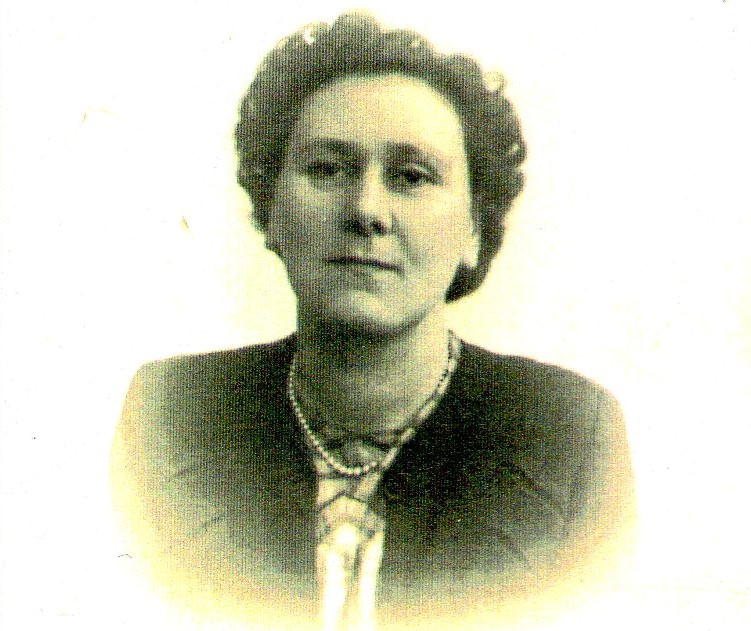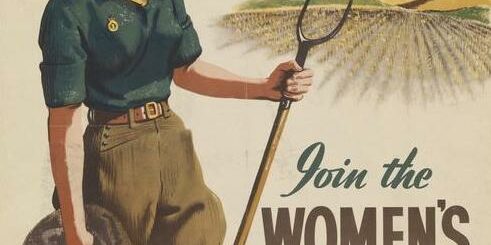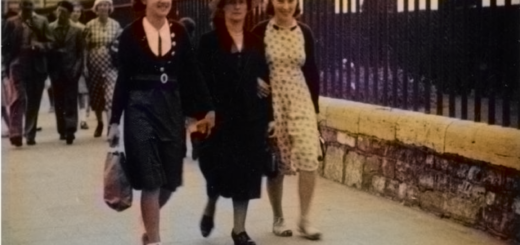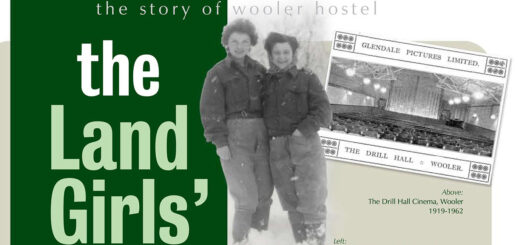Rachel Greaves
In this guest post, Rev. Basil Denno reflects on his great aunt, Rachel Greaves’ (29th January 1908 -17th January 2007) service in the Women’s Land Army in Worcestershire and Derbyshire during the Second World War.
I don’t remember ever speaking to my great aunt Rachel directly about her time in the Women’s Land Army. It’s from my mother that I’ve learnt she was assigned to three different locations: Fladbury in Worcestershire, and Foston and Great Longstone in Derbyshire. I don’t know the dates, and therefore the order, in which she served in those places, and my knowledge of her activities at each site is scanty.
Fladbury was imprinted on my mind during my years (1964 – 1968) at a boarding school in the small Worcestershire village of Hanley Castle. I was desperately homesick at that school, and craved contact with members of my family. In my final year I had a push-bike, which enabled me to cycle one afternoon as far as Fladbury.
Great Aunt Rachel was living in Sheffield at that stage, miles away from Fladbury, but being in a place where she had been made me feel in some sort of mystical contact with her, and it helped me emotionally.
I read recently that Land Army girls had helped by planting leeks in the test run of a mechanical planter, patented by Sid and Ralph Brooks, that took place on land owned by Bomford’s, the agricultural machinery merchants, in Fladbury in July 1942.¹ I don’t know if there’s any chance that Great Aunt Rachel was one of those women; it depends on the dates she was there.
The main story which has entered the family folklore from Great Aunt Rachel’s time at Foston is of the attentions she received from a man called Arthur. She worked in the gardens of Foston Hall, and he was the head gardener there. My mother remembers Arthur visiting Rachel at her home in Sheffield towards the end, or soon after the end, of the war.
I’ve discovered that Foston Hall was requisitioned by the Home Office to be temporary accommodation for children and staff of the Railway Servants’ Orphanage (Derby) from 1940 to 1946.² I imagine that the gardens were mainly used as allotments to produce food for the physical well-being of the occupants of the hall, but if there was an aesthetic element as well, for the people’s emotional welfare, I have yet to find out.
Army and air force personnel were stationed in the Foston locality, so there would have been opportunities for a wider social life, if Rachel had wanted it. In the long-term the relationship with Arthur never worked out, seemingly because Rachel didn’t want to pursue it, and she remained single all her life.
Great Aunt Rachel’s Land Army work on the Thornhill family’s farm at Great Longstone was significant for her later life too, because it made her eligible for a place in the care home, Thornhill House, which the family ran for local residents and their former employees.
She died there on 17th January 2007, and was buried in the graveyard of the village church (St. Giles) on what would have been her 99th birthday.
Born on 29th January 1908, Rachel was the youngest child of Dr. Robert Bond Greaves of Sheffield. Before the war she had trained as a sculptress, and had modelled a set of small ballet dancers for Royal Worcester.
After the war she assisted with the making of the orange blossom sprays for Royal Worcester’s Dorothy Doughty series, and then in 1982 the company reissued a number of her ballerinas, this time in a hard white glaze.³ In 1950 Rachel had joined the staff of Birkdale Preparatory School in Sheffield as an art teacher, and she remained there until her retirement in 1970.
Great Aunt Rachel was an ardent believer in Jesus, and it was she who first put a study Bible and a copy of ‘The way I see it’, Cliff Richard’s Christian testimony, into my hands, which was an important step in my own spiritual journey.⁴
Rev. Basil Denno, Buxton 2021
¹ https://worcesternews.co.uk/news/7791348.landgirls-the-women-who-won-the-war-down-on-the-farm/ (accessed 2nd April 2021)
² http://www.foston and scroptonparishcouncil.org.uk/about-us/ (accessed 2nd April 2021)
³ The Sandon Guide to Royal Worcester Figures, 1900 – 1970 (Alderman Press, 1987), p.43
⁴ Basil Denno, A Trail of Pistachio Nutshells (2018), p.210



